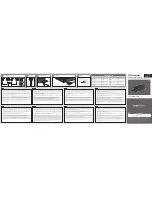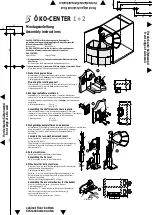
Instructions for Use
– SCHMIDT
®
Flow Sensor SS 20.700
Page 20
Short circuit mode
In case of a short circuit against the positive rail of the supply voltage
(+U
B
), the signal output is switched off.
In case of a short circuit against the negative rail (GND) of the operat-
ing voltage, the output switches to the current mode (R
L
is calculated
to 0
) and provides the corresponding signal current.
If the signal output is connected to +U
B
via a resistance, the value R
L
is calculated incorrectly and false signal values are caused.
Wiring of pulse output 1
(highside driver, PNP)
The pulse output is current-limited, short-circuit protected and has the fol-
lowing technical characteristics:
Design:
Highside driver, open collector (PNP)
Minimum high level U
S,H,min
:
U
B
– 3 V (with maximum switching current)
Maximum low level U
S,L,max
:
0 V
Short circuit current limitation:
Approx. 100 mA
Maximum leakage current I
Off,max
: 10 µA
Minimum load resistance R
L,min
:
Depending on switching voltage U
B
(see below)
Maximum load capacitance C
L
:
10 nF
Maximum cable length:
100 m
Wiring:
Figure 4-4
This pulse output can be used for direct driving of low-impedance loads
(e.g. optocoupler, coil of relay etc.) with a maximum current consumption
of approx. I
L,max
= 100 mA.
This allows calculating the minimum permitted (static
18
) load resistance
R
L,min
depending on the operating voltage U
B
:
𝑅
𝐿,𝑚𝑖𝑛
=
𝑈
𝐵
− 3 𝑉
𝐼
𝐿,𝑚𝑎𝑥
=
𝑈
𝐵
− 3 𝑉
0.1 𝐴
Example:
In case of the maximum operating voltage of U
B,max
= 28.8 V the minimal
load is R
L,min
= 258
Ω.
Here the excessive heating power of the load has to be considered.
18
Overcurrent peaks are absorbed by the short circuit limiter.
















































